with 6th grader Abby Bunting
As we close out the first season of #vted Reads, we celebrate another first: our first student guest on the podcast. In this episode, I’m joined by South Burlington sixth-grader Abby Bunting, as we discuss the book Watch Us Rise, by Renée Watson and Ellen Hagan. We’ll meet the book’s artivists (Google it) and talk about how unpacking stereotypes that might not apply to you still makes the world a better place for your own activism.
I’m not a minority, and I’m very… definitely just privileged. I feel like these books are a way for me to… like when we’re talking about stepping in the others’ shoes.
Let’s chat.
Jeanie: I’m Jeanie Phillips and welcome to #vted Reads. We are here to talk books for educators, by educators, and with educators. Today I’m with Abby Bunting, and we’ll be talking about Watch Us Rise by Renée Watson and Ellen Hagan. Thanks for joining me, Abby. Tell us a little bit about who you are and what you do.
Abby: Hi, I’m Abby and I am a sixth-grade student at Frederick H. Tuttle Middle School in South Burlington. I love to do sports, read, pretty much a lot of out of school activities.
Jeanie: Excellent! I’m so delighted to have you here, Abby, and thank you for selecting this lovely book, Watch Us Rise, which is written in two voices. Could you introduce us to Jasmine and Chelsea?
Introducing Jasmine & Chelsea
Abby: Jasmine is a young, black woman and Chelsea is a young, white woman. Jasmine is a lot more quiet. Chelsea is more of a firecracker and is outspoken and loud and likes to stand up to things, whereas Jasmine normally takes a little bit of a backseat to think about more ways to do it in a polite manner or softer way.
Jeanie: They’ve been friends for a long time, haven’t they?
Abby: Yes, they’ve been friends for a long time.
When a white girl on the playground told Jasmine that if she took a bath hard enough, the brown would come out of her skin and Chelsea slapped her.
Eventually, they learned about the non-violent movement, but that was a really good moment for Jasmine to feel that she had a friend in Chelsea.
Jeanie: Yes. I had forgotten that part. Thank you for bringing that forward. They have a couple of other friends who play a role in the story, too, even though they’re not primary figures. Do you want to introduce their two other friends?
Abby: Yes. Isaac and Nadine. Isaac has been a part of their group for a long time and there’s a little bit of romance going on between Isaac and Jasmine. Nadine is one of their friends, a fashion diva. She’s amazing and really a centerpoint for the group.
Jeanie: Did you, like me, feel like,
“This just makes me want to be in their friend circle?”
Abby: Yes, I do. They have a really good relationship and all communicate very well.
Jeanie: Right. They spend a lot of time at Jasmine’s house. Jasmine’s father, Mr. Gray, is sort of an inspiration for them. He works at a local cultural center and museum. He sends Jasmine, and Isaac, and Nadine, and Chelsea off on these “challenges”, he calls them.
And the book begins when he sends them on the “Brown Art Challenge”.
Do you want to talk about what the “Brown Art Challenge” is?
Abby: Yes. It’s pretty much going around New York and finding exhibits that aren’t really well-known and taking a look and being inspired. I know Chelsea writes a poem. Isaac, who’s a really good drawer, does a lot of pictures about them.
Jeanie: Right, and so he’s really asking them to find art that represents brown and Black people, people of color, right?
Abby: Yes. That isn’t very much represented around New York, popularly.
Jeanie: Yes, and so he sends them to Harlem, to explore the Harlem Renaissance at one point, right? Do you remember any of the other things he sends them towards?
Abby: I don’t remember any of the other things he sends them to, but he sends them, at the end — even though at the beginning he says that they’re not allowed to — but to where Mr. Gray used to work for a new exhibit.
Jeanie: Yes. I wanted a dad like that in my life. I wanted somebody like that, who would inspire me to look out beyond myself. Did you feel that way, too?
Abby: I did. I think Mr. Gray is a really good character and obviously has a lot of input on Jasmine and inspires her a lot. I think Mr. Gray (or, her dad) is a big part of Jasmine’s life.
The artivists
Jeanie: Absolutely. He also calls this crew of four the “artivists” like activists but with art. Artivists. I love that term. Do you want to talk about why he uses that term in particular?
Abby: I think that it’s a really good way for him to put across a message to the kids that art can be a very good non-violent way of getting a point across
but also it’s almost giving the person a point of view from your perspective and a really good way just to see all of the things in a beautiful art form.
Jeanie: Yes. It’s like he sees these kids already as change-makers.
Abby: Yes. I think definitely they all put forth a strong vibe of wanting to make a difference.
Jeanie: Do you want to make a difference in your world?
Abby: Yes.
I feel committed to making the world a better place. We have so many wonderful parts of it right now but it’s an opportunity.
Jeanie: Yes. Did this book feel like it inspired you, or did it feel like mirrored your own path?
Abby: I would say it definitely gave me some inspiration just to be who I am and pretty much forget about anything else that the media or world is trying to send at us and just to be myself and doing what I want to do.
A social-justice approach to education…
Jeanie: I bring up the artivism, the artivists, because Chelsea and Jasmine especially become artivists in a really interesting way in their school. Their school is Amsterdam Heights Collaborative Community School. It’s a real social justice-oriented school.
It prides itself, right, on being social justice-minded. The students at that school are required to join the club and attend weekly meetings after school of a club. For example, Nadine, she’s in a design club. Isaac is in an art, like a visual arts club. Chelsea’s in a poetry club. Oh no! I got it wrong.
Abby: Actually–
Jeanie: Could you remind me of the clubs that our fearsome group of four start in at the beginning of the year because they’re all in clubs that they’ve been in for a couple of years?
Abby: Yes. Chelsea is in a Poems for Peace group and she has been there for a very long time. She loves it because it’s a chance to express herself but also do it in a form of poetry which she also loves doing. Isaac and Jasmine are both in the theater group. Jasmine loves acting and they both are fueled by the same desire to just be on stage and be who they are.
… that may sometimes miss the social-justice mark
Jeanie: What happens that leads to Jasmine and Chelsea leaving their clubs?
Abby: Well, for Jasmine, she’s always been portrayed as either depressed or lonely or sad, young, black woman or someone who can pour a lot of sad emotion now on the stage. She really has a good way of shedding her normal skin to play another character. They’re doing a freeze run where everyone is doing an acting scene and then you freeze and someone else comes in and starts where you start to make up a new… makes up a new scene.
Jasmine and Isaac have a special moment together. Mr. Morrison, all he sees is a young, sassy, black woman. Jasmine finds that really offensive. Another character in the book, Meg, is someone who really puts Jasmine down a lot. She’s very skinny, and Jasmine has more weight than she does. I think it’s like she just feels that it’s not right for her and she has so much more in her than being sassy, black, and overweight.
Jeanie: Right, she’s pigeonholed into stereotypes. It really echoes what we see in Hollywood where you see people really advocating for a broader array of roles for women characters and especially women of color characters.
Dealing with stereotypes
Abby: Yes, in fact, Jasmine’s first post on their Write a Girl blog is about the stereotype Hollywood actors that most black woman put into for all their roles.
Jeanie: Would you like to read that post?
Abby: Yes, I would love to read them.
Abby: Okay.
Some of these are The Jezebel, The Sapphire, and The Mammy. This is all of her post, her first post.
Jeanie: It’s so powerful, that’s she’s really spelling out for people who don’t understand what it means to have your role narrowed because of what you look like.
I love the way she ends it,
Let me repeat: I will not “act like a black girl.” Not unless she is nuanced Not unless she is imagined to be more than tired tropes and predictable clichés.
That is a fabulous passage that you shared, Abby. I think it really illuminates Jasmine’s experience in the world especially in her art, which she loves. Posting this is one way she’s being an artivist, isn’t it?
Abby: Yes, definitely. This is an insight to… this is just the beginning in the book. She really begins to find her stride and post more of these.
Jeanie: We’re getting ahead of ourselves though folks because we haven’t told you what this is yet. Let’s talk, before we go there, about Chelsea. What happens that she leaves the poetry club?
Challenging the (poetry) canon
Abby: Chelsea quits Poets for Peace and Justice because she feels that they’re studying too long ago writers, and while she feels like their writing and poetry is important, she feels that they should be studying more modern approaches to poetry.
A lot of her fellow poets say there’s always an issue with Chelsea for anything that she really does. She feels she uses her voice a lot to argue against anything that she feels is wrong. When she does that, people are saying that the classics are classics for a reason, but she feels it’s a racist reason because all of the people they study are white. At the end, she really quits because everyone says that it’s a poetry club when she feels that it could be more than that.
She wants a space where everyone is represented and she feels free to share what she wants to share.
Jeanie: You summarize that so beautifully, and it made me think: I read a lot of reviews of this book when I wrote my own review of this book. A lot of people do not like Chelsea. A lot of readers are not a fan of Chelsea and I wonder if they’re missing the point a little bit. Here’s why I’m going to say this. Chelsea is experiencing a kind of sexism, right? People are saying to her, “You argue too much. You speak up too much.” I’m not sure she would get the same reactions if she was male. What do you think?
Abby: I agree with that. I think that everyone who does think that Chelsea is not the best of characters, I think it’s a really good way to provide some insight to what it might be like being a girl who wants to speak up, who wants to share her own opinions and perspectives but is often put down because she is, yes, what you said, arguing or speaking up too much.
Jeanie: Yes. She’s a born leader. She’s a little bit of a bull in a china shop, right? She makes mistakes and messes up and she’s loud and emotional and outspoken, but I think she gets a bad rap, in part, because she’s not quite feminine enough.
Not feminine enough
Abby: Yes. That’s definitely something that both of them are dealing with. For Jasmine, she’s often put down because I think she’s not acting feminine enough or she doesn’t look the feminine part because she’s overweight. A lot of people put her in a box so she can’t run very well. She’s not strong and she’s not capable of doing all these things that really she can do but she’s put down because of her weight and how she is expected to look as feminine.
Jeanie: Yes, absolutely. There are all these assumptions made about her that she maybe can’t be attractive, and yet Isaac finds her very attractive, right?
Abby: Yes.
Or small enough
Jeanie: Or, that she’s must be unhealthy instead of just being big.
Abby: Yes, and she always knew that there wasn’t something… she says there wasn’t ever something right. When she was younger, the plumpness was cute and then she got older and she knew it wasn’t just big bones.
Jeanie: Unfortunately, even though Jasmine’s parents are amazing, her mom sometimes carries some of that baggage about weight and makes Jasmine feel bad about her size. It’s not just what happens out in the world on the subway, or on the streets, or at school with her peers, sometimes it even happens at home. How does Jasmine reckon with her body image? How does she deal with it?
Abby: Well, she struggles a lot with it throughout the book and she finds self-confidence in herself and learns to respect her body even though it’s big. At the end, Meg has poked fun of her a while for being overweight or her size.
She says that she’s not beautiful even though she’s big, she’s beautiful because she’s big.
That’s a really strong point for Jasmine and it gives her a chance to really just say that, “I don’t really care what you think because I know I’m beautiful.”
Jeanie: I love that you shared that. I had forgotten that powerful moment when Jasmine really claims her full self, the beauty of her full, whole self and it was a beautiful moment, a really powerful one. Poor Meg was left speechless.
Abby: Yes.
Jeanie: Jasmine and Chelsea no longer have a club, right? They’re completely stuck without a club and they have to have a club. They decided they don’t want to join an existing club, so what did they do?
Write Like A Girl
Going into the weekend listening to this Write Like a Girl Playlist from #WatchUsRise! Thanks @JPhillipsVT! @ellenhagan @bloomsburykids https://t.co/amPv4rpnyP
— Renée Watson (@reneewauthor) April 26, 2019
Abby: They decide to make their own club and put together and led by Ms. Lucas. It’s really something for them. They wanted a space where they could be themselves and share their own ideas. And stand up for being a woman and dealing with a lot of the sexist and racist accusations and stereotypes at their school which prides themselves on being really just a place for social awareness. It’s really a way for them to put forth a message that none of them really… the clubs that are existing, are dealing with what needs to be talked about.
Jeanie: Right. There are gender issues, that these are showing up and nobody’s talking about them. Each club has to have a blog, and what do they christen their blog? What do they call it?
Abby: They call it “Write Like a Girl.“
Jeanie: I love that title, do you?
Abby: Yes, I do as well because I think it really just says that they’re unafraid to be put down like that. A lot of people say, “Oh no! You throw like a girl, or you scream like a girl.” All of those things are perfectly normal to do.
It’s fine to write like a girl. They’re standing up for who they are. I think it’s a really good title for them.
Jeanie: Yes. You shared Jasmine’s first post on Write Like a Girl. Is there one of Chelsea’s post you’d like to share from the blog?
Abby: Let’s see.
Jeanie: The one I’m really interested in is… let’s see if we can find it, “Beauty Magazine Redux” is a found poem and isn’t going to read very well but she often writes about what she calls the Princess…
Abby: Industrial Complex.
Jeanie: The Princess Industrial Complex. Do you want to read that one?
Abby: I’d love to read that one. This is page 108.
Jeanie: I love that. That’s so powerful, isn’t it?
Abby: Yes, it’s amazing how she came up with these elements. I think she just shows that she’s such an amazing poet.
Jeanie: Yes, and fierce and yet she struggles. Chelsea really struggles, right? She is a rabid consumer of…
Abby: Of fashion.
Jeanie: … beauty magazines, right?
Contradictions and inward struggles
Abby: She really advocates against them saying that they put forward a stereotype, but at the same she struggles inwardly when she wasn’t put to be in the basketball homecoming. Her mom took her out for a Sunday and told her that girls don’t need that, they’re fine with their heads and their brains and they’re beautiful just the way they are. But instead Chelsea goes out the next day and finds all these beauty magazines to try and become beautiful on the outside.
Jeanie: Yes, she sort of has this obsession with lipstick even as she makes fun of the names of the shades, right? It’s complicated for her. She spends a lot of time thinking about what she looks like even as she talks about not wanting to think about what she looks like.
Abby: Yes, it’s an inward struggle for her.
Jeanie: Do you think that’s the reality for a lot of girls?
Abby: Yes, I think so because we’re growing up in a modern era where this is really… we’re put to be beautiful just the way we are, and a lot of people say that. But at the same time, there are always these little people who tell you to look a certain way. There’s this inward voice that’s telling you to be beautiful on the outside.
Even though in your heart you know you’re beautiful in the inside, but it’s still a point where you want to look beautiful on the outside even though you know you shouldn’t have to.
Jeanie: Yes, and there’s a lot of shame and guilt around that, right? You can feel like, “Oh I shouldn’t care what I look like.”
Abby: Yes, but at the same time you do.
Jeanie: Yes. I think it’s a really a complicated world for women, for young women, and for women my age as well. I really appreciate that Chelsea’s really like her full flawed self with this, right? That she’s not perfect. That she shows us her real humanity.
Abby: Yes. We already talked about Chelsea and how most people don’t like her as a character, but I think this really gives an insight to that, what you said, she’s human and she deals with all this guilt and sadness for knowing that it would be alright to not focus on these. At the same time she wants to look beautiful on the outside.
Calling out bias
Jeanie: Yes. There’s a reckoning for Chelsea and Jasmine as friends. As you’ve said they began their friendship because Chelsea stood up for Jasmine when somebody said something racist, but Chelsea expresses her own biases. Jasmine has to really call her on it in various points throughout the book. The most memorable one being about T-shirts.
Abby: Yes, and I think Jasmine really talks a lot about that and it teaches Chelsea a lesson going through this book. Chelsea thinks she knows a lot of things and she does and she stands up for a lot of things.
At the same time, Jasmine teaches her a valuable lesson that sometimes you’re fighting for all of this that sometimes you forget that you can be the one who’s making up these issues.
When you talk about the T-shirts, she had ordered T-shirts for Write Like a Girl and showing like woman power and some famous poets. She ordered all woman sizes and small, medium, and then the large and then she ordered a man’s large but she forgot that Jasmine is a little bit bigger than her and she won’t fit into all of these.

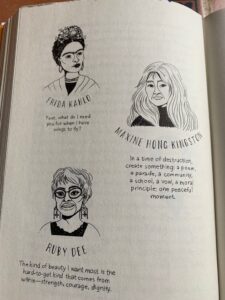
Chelsea tries to smooth it over by saying that she got a man’s large. Jasmine knows that it won’t really fit the right way and she needs to tell Chelsea that she needs to look out for that more.
Jeanie: Jasmine’s been sitting with this for a while, right? They go shopping. Of course, Chelsea loves to shop. But every shop they go to, Jasmine can only buy accessories because there’s very little clothing in her size. It’s not like their standard place to go is Lane Bryant, or a shop that has the kinds of sizes that Jasmine will wear.
Abby: Yes, and even in the plus sections Jasmine goes to, there are sizes that are way too small for her. She looks at these posters at the plus sizes in the racks and says that that would be a very skinny woman when you’re in an oversize world or the people around you who are the same way.
Walking around in other people’s shoes
Jeanie: That shop clerk’s come up and say, “Oh our plus sizes are on the internet. You’ll have to go on the internet for those.” She’s like, “I’m a teenager. I just want to shop in a store,” right?
That was a really good experience for me to walk around in Jasmine’s shoes in those chapters. I learned a lot walking around in her shoes. Which is why I read, so that I can walk around in other people’s shoes. Do you have that experience, too?
Abby: I love being… it just teaches you a lot, reading, and these stories that you read teaches us such valuable lessons.
Especially these new modern writers who are tackling these tough issues and stories that just really everyone can connect to.
Jeanie: Yes. Is there another passage you would like to share from the book? We don’t want to give away any spoilers, folks, so we’re just giving you a teaser on how this book progresses.
Abby: I’ll read one more from the Write Like a Girl blog. This one is Chelsea’s. This starts when she goes into S-T-E-A-M class before. She finds sexism in Silicon Valley.
Jeanie: You said it right. It’s a STEAM class.
An erasure poem on erasing women from tech
Abby: Yes, it’s a STEAM class, and her teacher challenges her to look up James Damore’s Google Memo about how women aren’t suited to be in the technology era or work in these places. She creates an erasure poem. An erasure poem is a piece of text that you cross out parts of it to make it a different meaning. One of the lines is “openness directed towards feelings and aesthetics rather than ideas.” You’d cross out, or what she did was she crossed out “directed,” “towards,” “and,” “rather than,” so it reads openness, feelings, aesthetics, and ideas.
Jeanie: Would you like to read just the uncrossed out sections of James Damore’s Google Memo, an erasure poem.
Abby:
Jeanie: I love that. I love that she completely changed the meaning of his text by crossing out certain words. Have you made any erasure poems of your own?
Abby: I have not. This was something I never heard of and also for the people who read this blog, it also strikes them. Yes. They say,
would love to see more of these erasure poems. It’s a very interesting form.
I think it’s good… Chelsea to bring up a different style of poem that isn’t very as well known.
Watch *us* rise.
Jeanie: Yes. This blog gets them into some trouble. We won’t spoil the book for you, but it also leads them to some really robust activism in their community and in their school which to me felt really empowering. I wondered what it was like being a student in a school to read about kids being activists in their school for you as somebody who’s an activist in your school in SOAR. What was that like for you?
Abby: I think it really struck me as I could connect with these characters, but as I said before, they really inspired me.
They showed me that it’s all right to get in a little trouble for what you’re doing because you know that if you really feel strongly and that you know it’s the right thing to do and stand up for it.
Normally, what you’re trying to stand up for isn’t very… or the audiences’ opinion I guess or what most people think, but it’s a way of changing minds and opening up a lot of barriers that some people wouldn’t normally look into.
Jeanie: Abby, I know that you’re involved in some activism here at South Burlington in Tuttle called SOAR, and I wonder if you saw any parallels or any ways in which that work is similar to the activism that shows up in Watch Us Rise?
https://twitter.com/lifelegeros/status/1130916728039452672
Abby: I think that I can connect with Watch Us Rise because I do do some of this work in SOAR. SOAR is Students Organizing Against Racism. We do a lot of work with just like gathering confidence in the people who attend to speak up against racists and all the issues that we feel are going on outside of school or wherever you really see them because it is hard to stand up when you hear those things.
I think SOAR is a place where you learn to have confidence in yourself but also know the right way to deal with the situation.
I connect more with Jasmine though because we don’t do what Chelsea does which is put posters everywhere around the school and spread the message in a big way. And I think that’s a good way to do it, but at the same time in SOAR, we go to conferences and give presentations about what we’re doing to inspire other schools to do it, or other people to know who we are.
Jeanie: That’s great work you’re doing. Congratulations on all the success.
Abby: Thank you.
Books with strong female voices
Jeanie: I think the last thing I really want to pick your brain about and learn from you about is this is a book with powerful female voices with girls really learning and practicing using their voice in powerful ways. I’m wondering if there are other books you would recommend to readers that would inspire or demonstrate girls grappling with how to find their voice in the world.
Abby: Some of the other books that I feel are good ways for women to hear their… young women grappling to try and find their voice is The Hate U Give and On the Come Up. Both of these are by Angie Thomas, and I think she’s an incredible writer.
In The Hate U Give, Starr really has a time figuring out who she is and what she really wants to stand up to. There’s these issues in the book, things that happened that really lead her to think a different way about all those and find her voice definitely.
Jeanie: Yes. Those are both great books. Actually, I’m reading On the Come Up now, and it really appeals to me as a book about a young woman finding her voice in rap music.
Abby: Yes, it’s a really interesting way to write a book.
I love Angie Thomas’ raps themselves. I thought they were really standing up for something.
At the end of our book, the main character really finds who she is and doesn’t listen to all that goes around in her neighborhood about. She knows that she really needs to find her voice and know if she’s going to continue with rap music she needs to stay in her own boundaries and what she wants to do instead of what other people are forcing her to do.
Jeanie: Yes. Those are great recommendations. I am also thinking about… this is an oldie, but Laurie Halse Anderson’s Speak. Have you ever read that book? It’s about a young woman who doesn’t speak, who loses her voice because of an act of violence. And how she comes back to finding her voice. That feels like another one to add to our strong female voice playlist here.
Then I was thinking about Amal Unbound, which is a favorite of mine from last year about a young Pakistani girl who really wants to get an education. She actually wants to be a teacher but because of the circumstances of her life is forced out of schooling and then has to find her way back. She also feels like a fierce, young woman who’s saying,
“No, my voice deserves to be heard and I deserve to be educated.”
I’m sure we could come up with some others. Other strong female characters? Renée Watson’s other book, Piecing Me Together seems like a great example of a young woman who’s really finding herself and her way in the world.
Abby: Yes, I think that’s a great one to put on the list. I’d really recommend that one because she’s a person of two worlds. She goes to a school where it’s mainly white and she’s very privileged there, but also she describes it as “an ant in a sea of milk.”
She’s really by herself there but when she goes home, it’s also different. She can’t get the same education but she feels more at home with people like her there, and it’s like a way for her to encourage the school that she goes to mix both of these things and piece her together, hence, I think the title.
Jeanie: Yes. I think Renée Watson writes microaggression so well, right?
Like in this book, too, she experiences all these little pinches of racism and sexism that aren’t quite like hate speech but that add up, that have this cumulative effect.
You also see that show up in Piecing Me Together. Nobody’s shot by a police officer. It’s not a Black Lives Matter book necessarily but it’s a book about microaggression.
As somebody who doesn’t experience a ton of microaggression in my life, it really helps me see the world differently to read from that perspective.
Abby: I definitely agree with that. I’m not a minority, and I’m very… definitely just privileged. I feel like these books are a way for me to… like when we’re talking about stepping in the others’ shoes.
Reading is a great way to really stay in tune with the world outside you that you might really not pay attention to as much but can relate to with these characters and these stories.
Jeanie: Do you have any other book suggestions for us, Abby, that allow you to have empathy for other people’s lived experience?
Abby: These aren’t necessarily women empowering books but Dear Martin and Anger Is a Gift. Anger Is a Gift is a new book. Both of these I would recommend for people just grappling with the issues outside of school or wherever they are and getting a real empathy towards these characters and what they’re going through. But it also inspires me every day to just continue living up to who those people are.
Jeanie: That is the perfect way to end this episode. That was beautiful. Any last words on Watch Us Rise?
Abby: I would recommend it to anybody. I hope that the people who are listening to this really check it out.
Go read it!
Jeanie: Thank you for sharing your voice with us, Abby, and your insights into this beautiful book and for taking the time to talk to me. I really appreciate it.
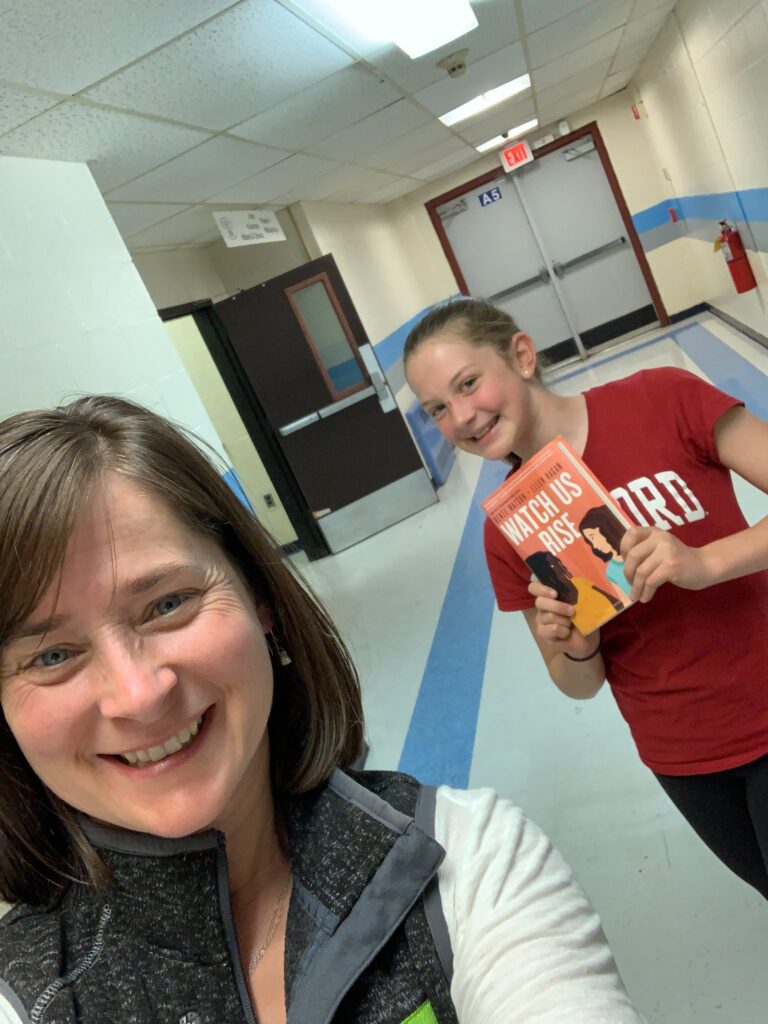
I’m Jeanie Phillips and this has been an episode of #vted Reads talking about what Vermont’s educators and students are reading. Thank you to Abby Bunting for appearing on the show and talking with me about Watch Us Rise. If you’re looking for a copy of Watch Us Rise, check your local library. To find out more about #vted Reads including past episodes, upcoming guest and reads, and a whole lot more, you can visit vtedreads.tarrantinstitute.org. Follow us on Twitter and Instagram @vtedreads. This podcast is a project of the Tarrant Institute for Innovative Education at the University of Vermont.
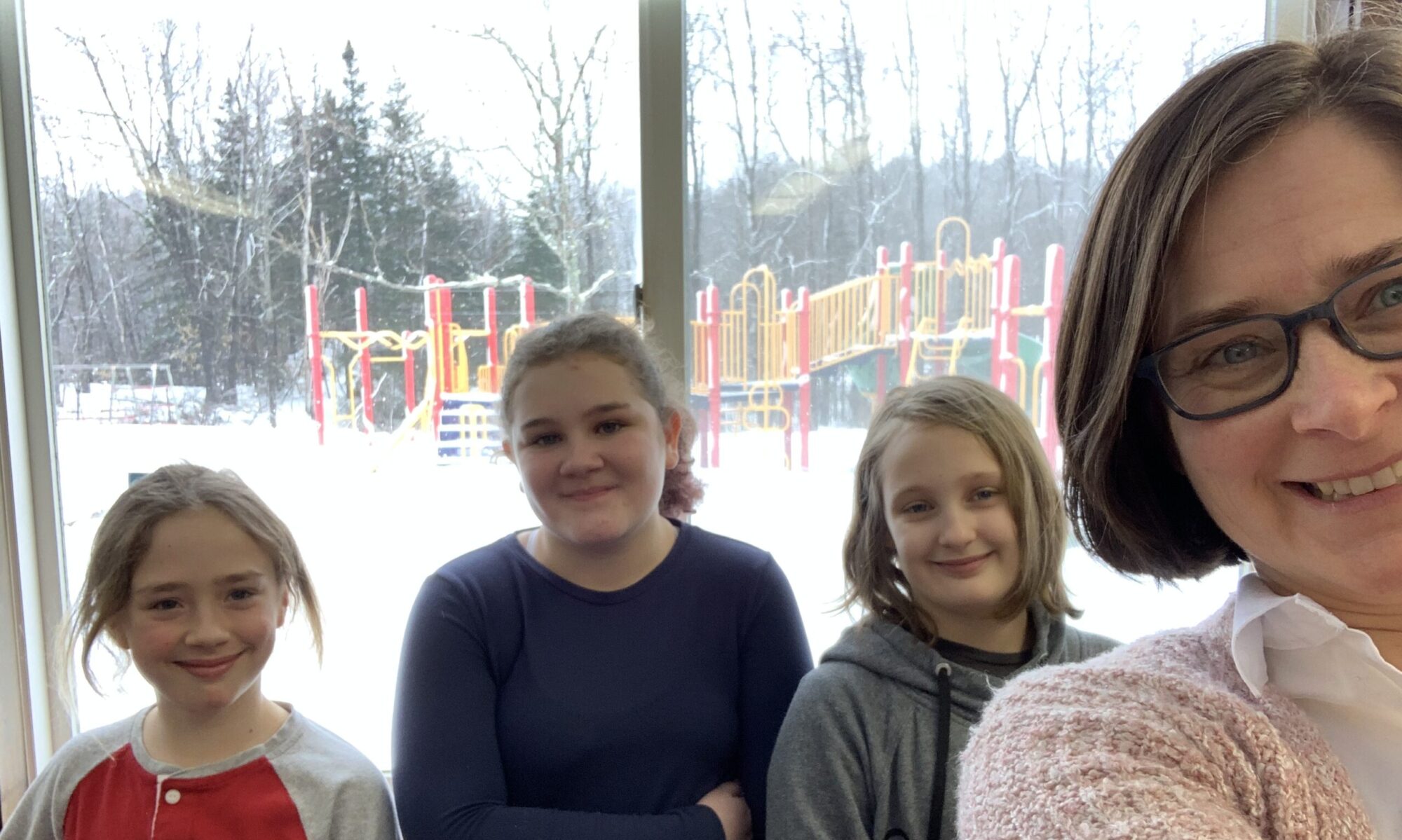

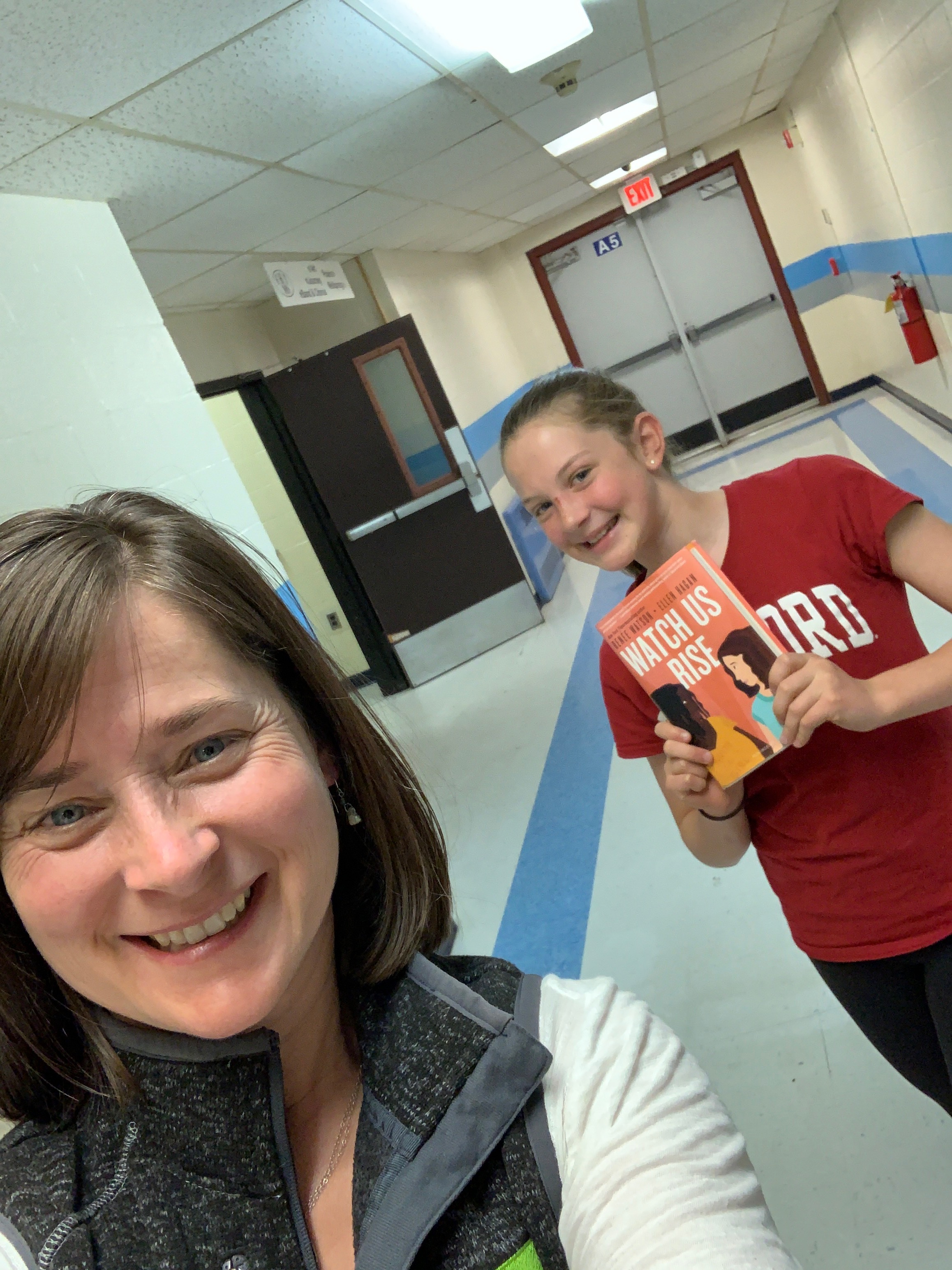
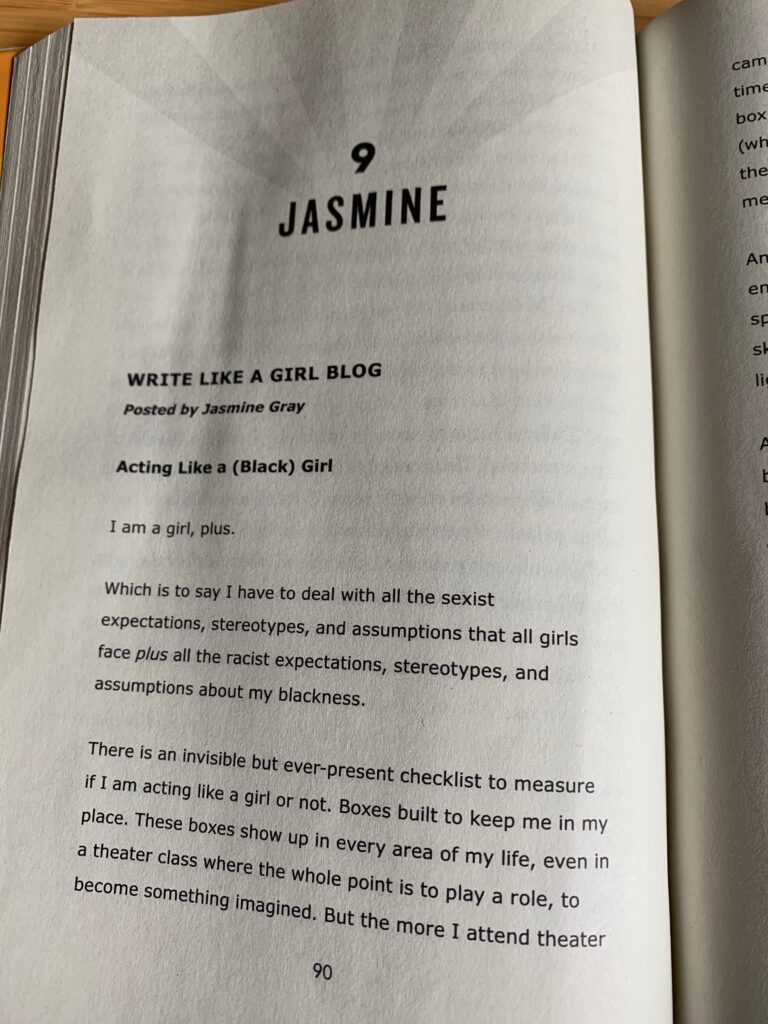
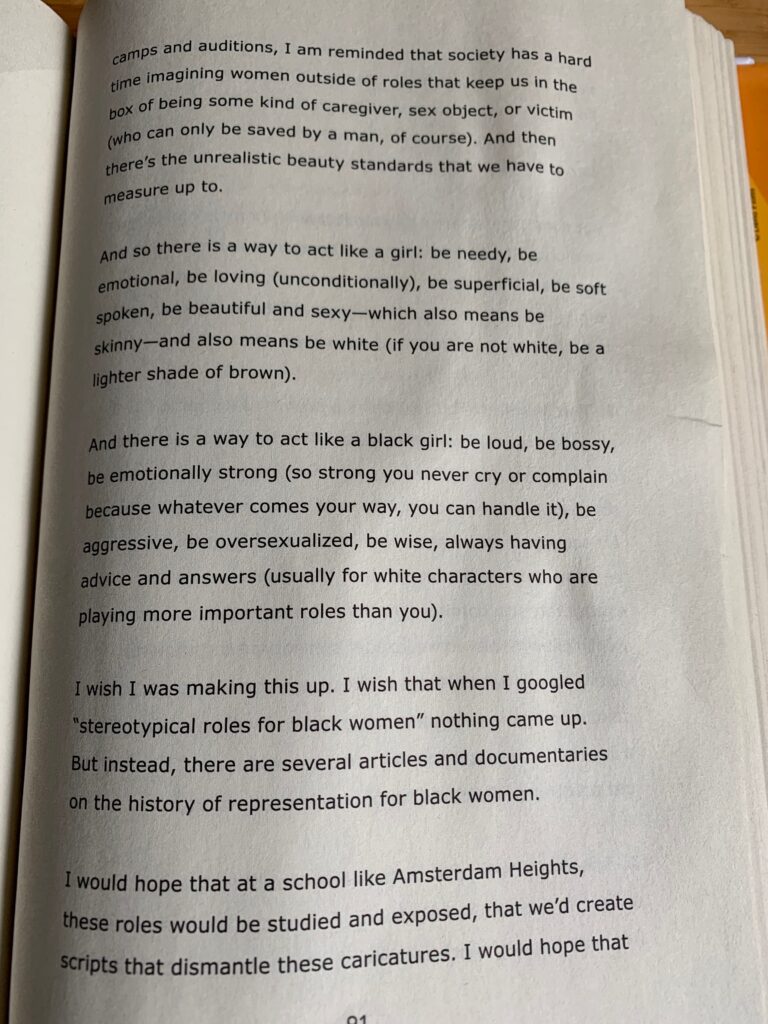
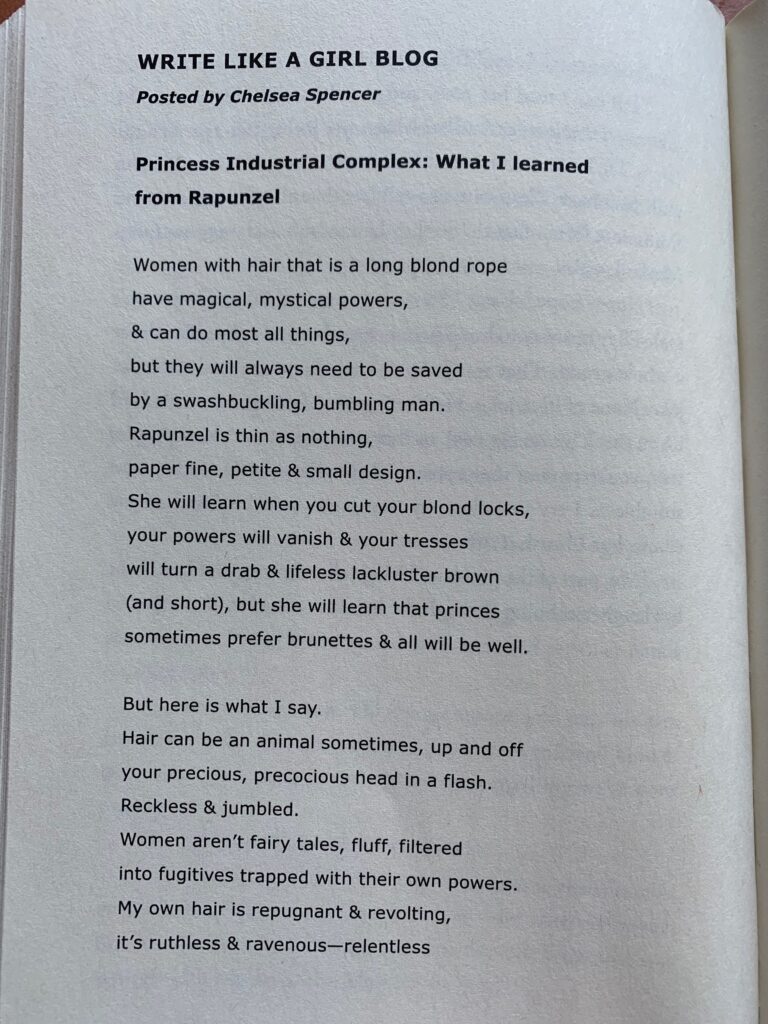
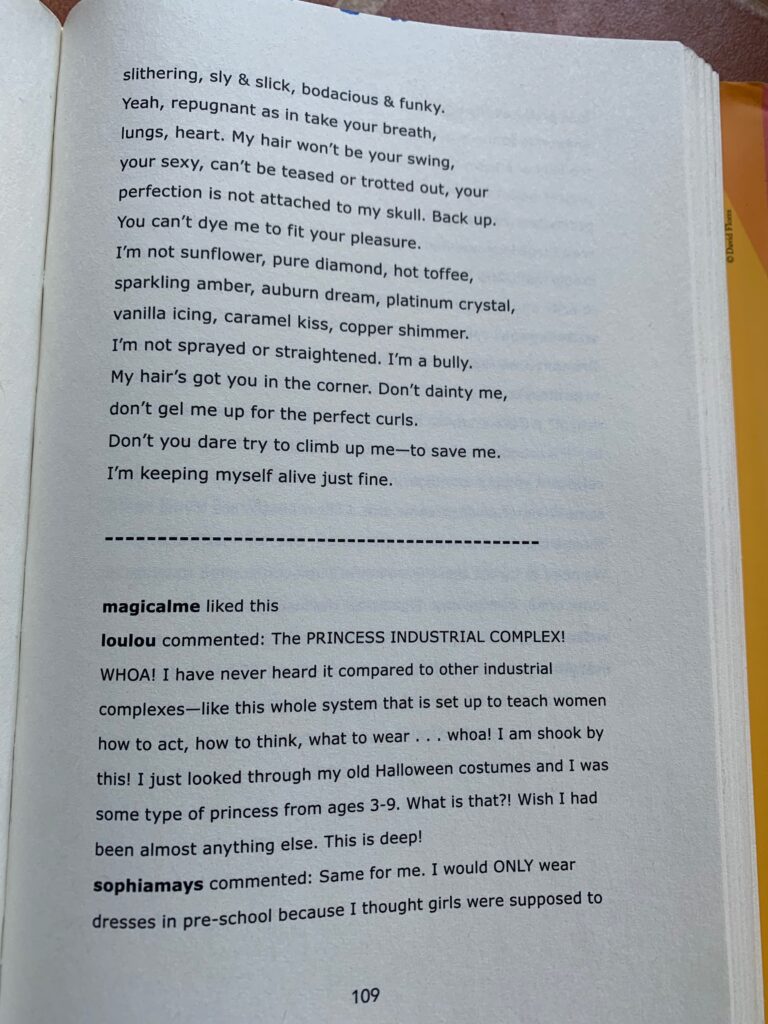
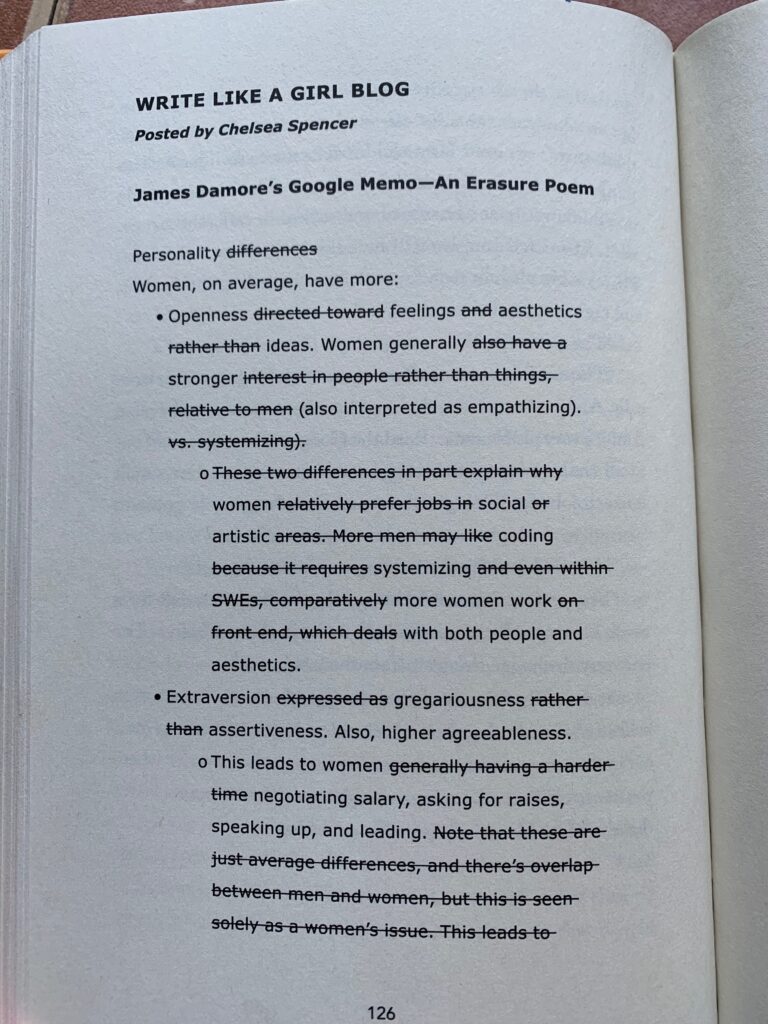
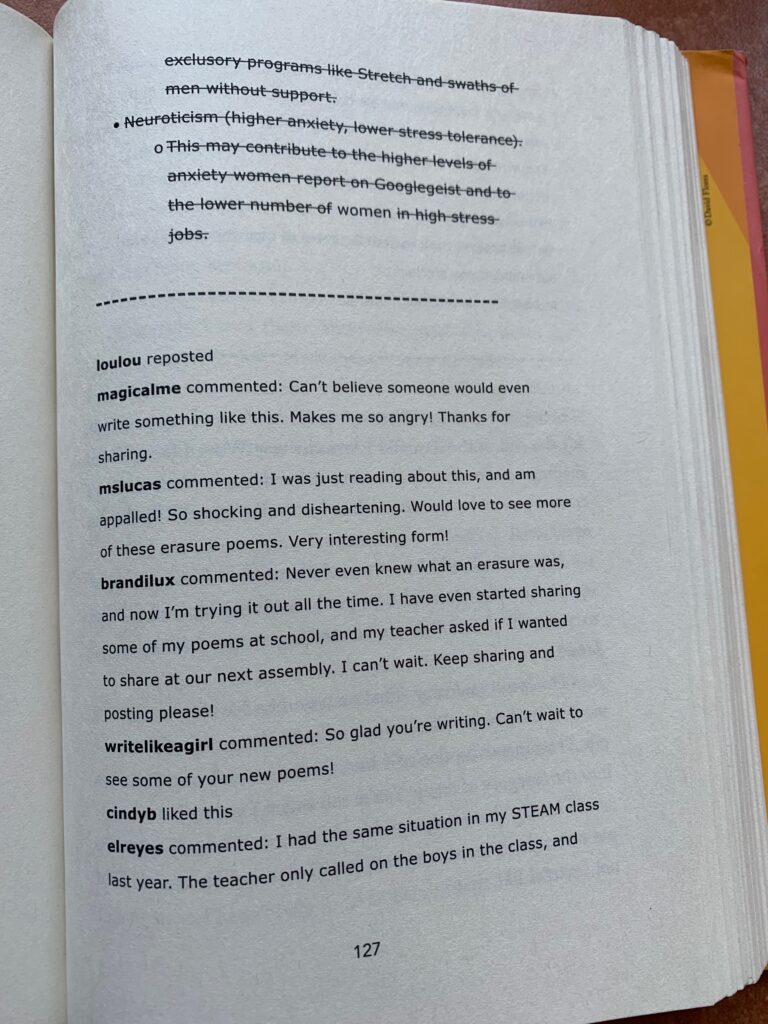
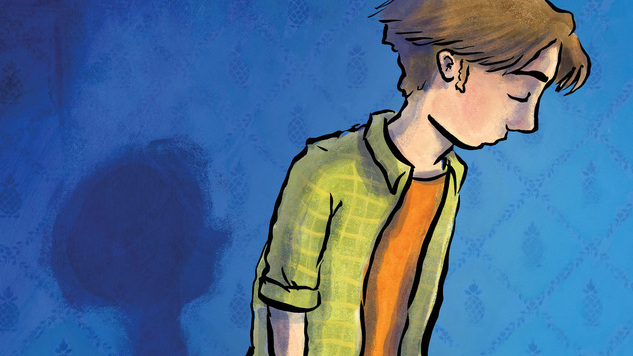
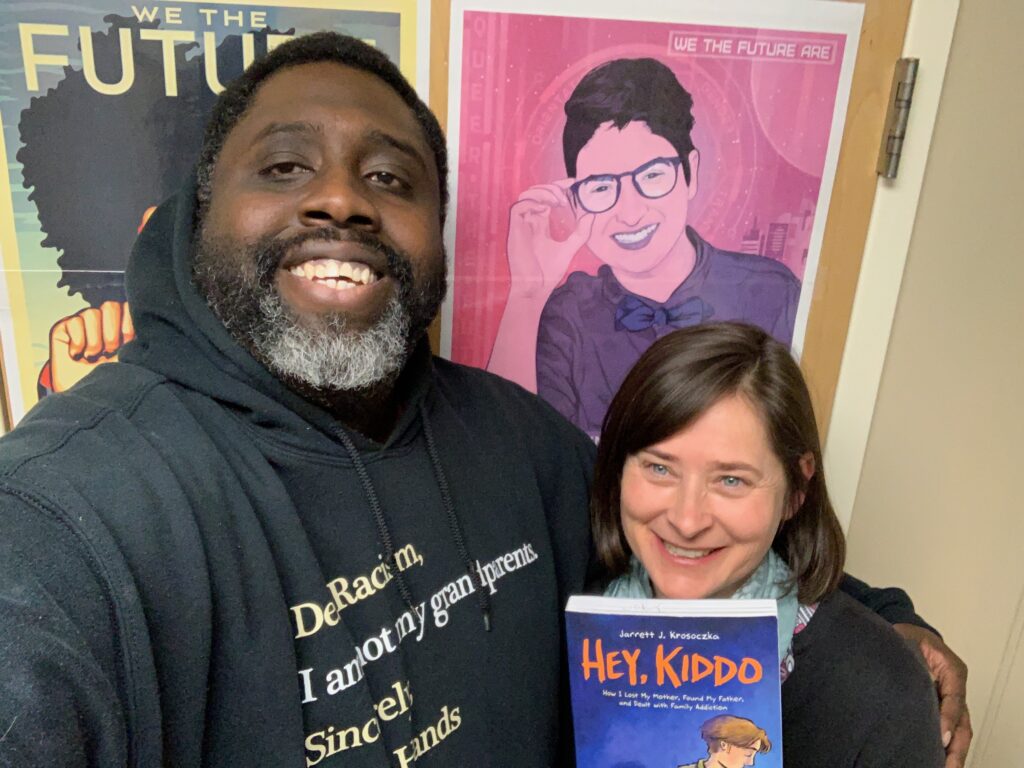
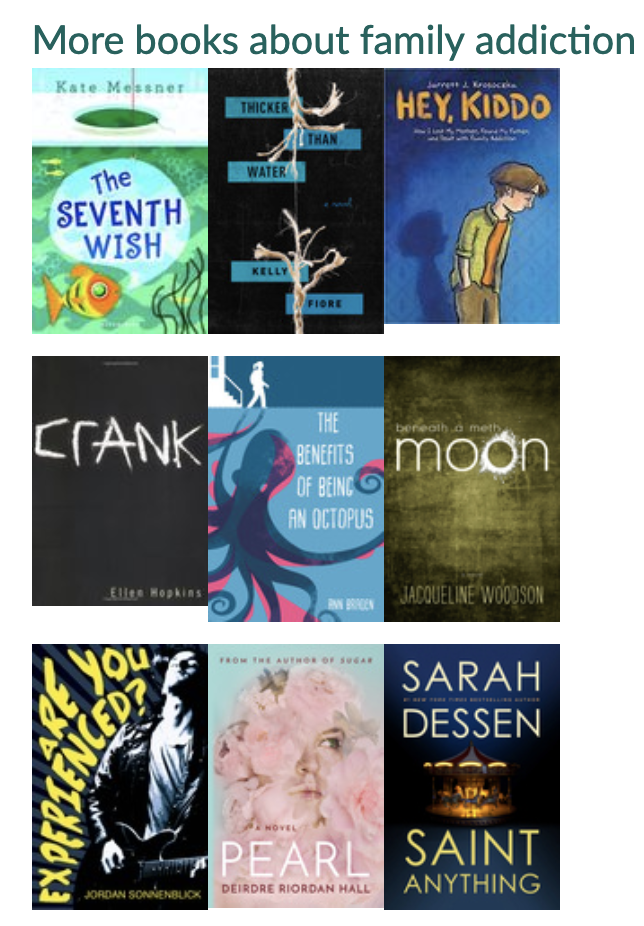
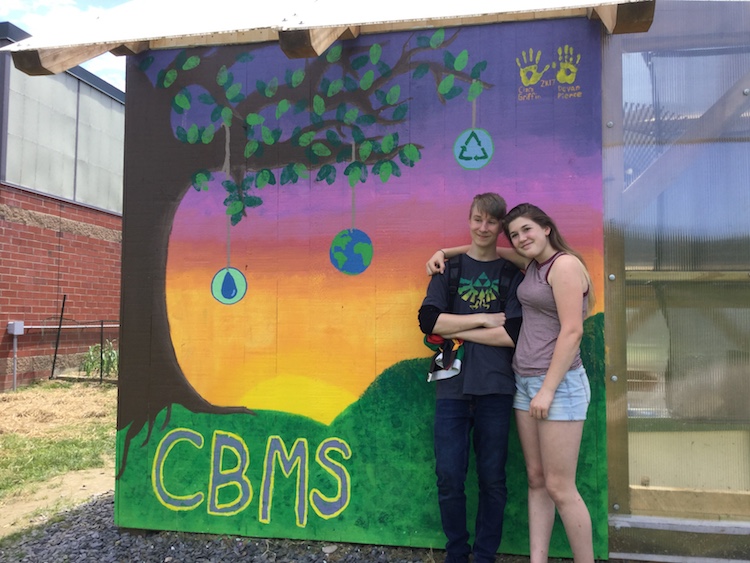
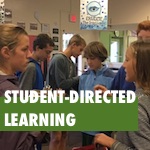 Art is “the expression or application of human creative skill and imagination”. To teach children that expression or application sounds like a lofty endeavor. But that is exactly what art teachers do in our schools every day.
Art is “the expression or application of human creative skill and imagination”. To teach children that expression or application sounds like a lofty endeavor. But that is exactly what art teachers do in our schools every day.